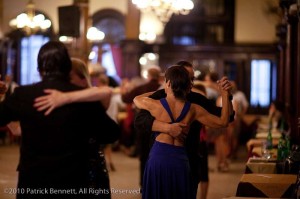 I’ve been promising since last October to share my data from the Second Annual International Conference on Tango Therapy, which I attended in Mendoza, Argentina. Health professionals from every walk of life were there—heart doc, psychologists, physical therapists, sexologist, nurses, and more, including passionate dance teachers. The notes and info I took away are copious and it’s been laborious sorting through to give you a clear concise idea of all the research and experience that is out there. The attendees were from many countries in Europe, South & North America, and elsewhere.
I’ve been promising since last October to share my data from the Second Annual International Conference on Tango Therapy, which I attended in Mendoza, Argentina. Health professionals from every walk of life were there—heart doc, psychologists, physical therapists, sexologist, nurses, and more, including passionate dance teachers. The notes and info I took away are copious and it’s been laborious sorting through to give you a clear concise idea of all the research and experience that is out there. The attendees were from many countries in Europe, South & North America, and elsewhere.
Two points I’d like to make before giving you a link to some of the material I’ve begun to transcribe:
1. Tango is different from other types of dancing for reasons that are definable and some that are not. You’ll hear about the pauses, the silence, the partners not speaking, not thinking, not looking at each other. The embrace is soft and sliding and so intimate, it’s as if the two partners are undergoing cell-fusion. The music has no fixed rhythmic pattern. The dance has a simple structure but is open to infinite improvisation (think of how few elements there are in the universe relative to the infinite ways they differentiate matter).
2. There is no such thing as tango. It only exists when two or more people agree there is such a thing as tango. So, if your divining rod to the chi, divine, Samadhi, god or god-ness, one-ness, bliss, or that zone is knitting, playing the accordion, surfing, cooking, hiking, or whatever, you need not change course. Unless you’d like to try another gateway to the same place.
Link to my notes from the Tango Therapy Conference.
Tango